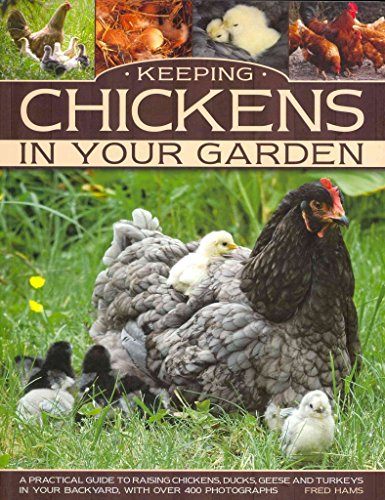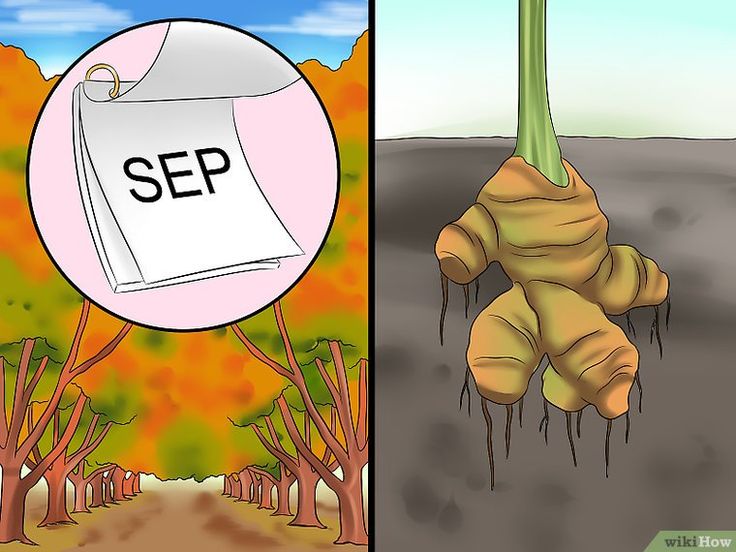Keeping hens in your garden
How Easy Is It To Keep Chickens In The Garden?
Keeping chickens in the garden should be no different to looking after guinea pigs or rabbits. They will need housing, food, care and attention, which will involve spending both time and money, but you'll find the effort and expense very rewarding.
What Type Of Coop Do I Need?
Whatever shape or size, coops should provide a safe haven from the weather and predators. They should be robustly built to withstand strong winds and offer shelter for hens who may not have experienced rain before. However, the main difference between commercially available coops is whether or not they have an integral run enclosed by wire mesh.
The starter chicken coop is a good example of a coop that has an integral run. If sited on grass, you must be physically able to regularly re-locate a coop with a run attached. If the hen house or coop does not have a run it can remain static but you will have to fence off an adjacent area to guard the hens from predation.
How Much Space Do Chickens Need?
The size of the coop is dependent on the number of chickens you have. The floor space inside a coop should be approximately 4sq ft per hen, but it is always a good idea to buy a coop larger than your present needs to accommodate more hens when you become more experienced in keeping them and want to expand the flock.
What Features Should A Coop Have?
As chicken coops are going to be outside in all weathers, buy one made from good quality materials such as pressure treated wood. Make sure the coop is weatherproof and the nesting box dry. Although draught free, there should be some ventilation. Any mesh should be made from heavy duty galvanized wire. There should be a 'pop door' for the hens to go in and out of the nest box and make sure that the coop is easy to look after without having to be disassembled. Everywhere should be within reach when you clean and disinfect.
Where Do I Position My Chicken Coop?
You do not have to position the coop on grass, but this is the most popular choice.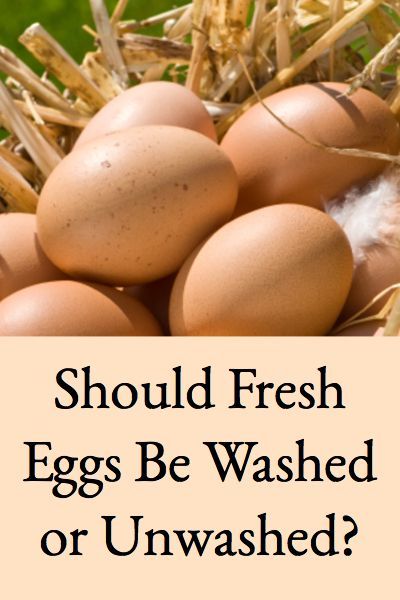 It will need to be relocated every one – three days before the grass becomes totally worn out. Hens will scratch all the grass and moss up to uncover tasty insects, so it is unlikely that your lawn will remain pristine for very long. On hard surfaces, litter such as wood shavings should be used to cover the floor, these will absorb droppings and will regularly need to be changed depending on the depth.
It will need to be relocated every one – three days before the grass becomes totally worn out. Hens will scratch all the grass and moss up to uncover tasty insects, so it is unlikely that your lawn will remain pristine for very long. On hard surfaces, litter such as wood shavings should be used to cover the floor, these will absorb droppings and will regularly need to be changed depending on the depth.
What Equipment Do I Need?
A pair of gloves, a small shovel and wheelbarrow / container to transport waste bedding material to a compost heap, a hard brush, torch for when its dark, food and water dispensers, disinfectant for the feeders and coop.
What Do You Feed Chickens?
To keep laying, your hens need be fed a good quality balanced diet twice a day. If your hens are ex-battery animals you will need to wean them off the mash they have been fed and onto Layers Crumble or Pellets, these contain all the nutrients they need. On average each hen will consume between 100g – 150g (3½oz – 5¼oz per day throughout the year).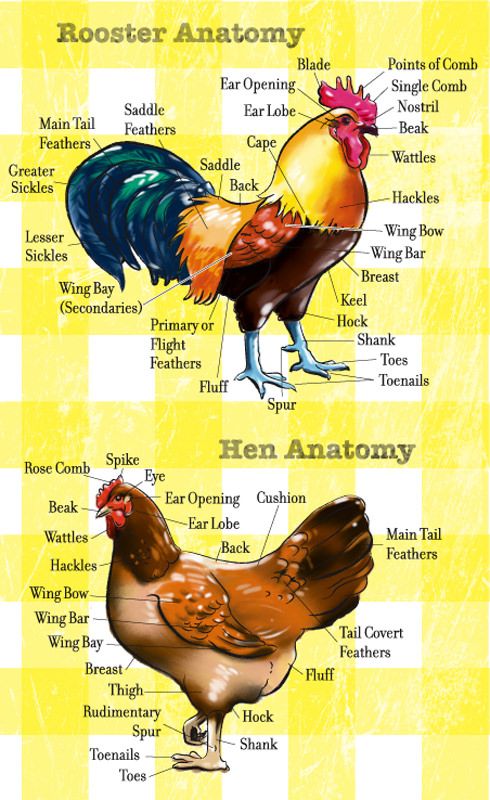
Extra treats in the form of mixed corn (wheat and maze) are always appreciated especially to fatten poultry up before the winter and after moulting. Feeding scraps from your kitchen is now banned by DEFRA.
Fresh water must be available at all times. Grit also needs to be provided to help digestion and oyster shell pieces will ensure your chickens have enough calcium to produce hard egg shells. Apple cider vinegar has a range of minerals and vitamins and should be diluted occasionally with your hens' water.
Do Chickens Eat Garden Plants?
Yes, and some are potentially poisonous such as daffodils, foxgloves and sweat peas. Although chickens will eat weeds they will also love your vegetable plot, particular favourites are lettuce, spinach, kale, beetroot and tomatoes. They will consume any herbs that you are growing, and lavender, sage, mint and other aromatic herbs added to their nesting material can help keep it smelling sweet.
How Do I Protect My Chickens From Foxes?
To prevent foxes accessing an exterior run by digging or climbing you need a fence that is approximately 5ft – 6ft high and buried 8ins – 12ins into the earth. Only good quality wire mesh should be used, chicken wire is inadequate if used on its own.
Only good quality wire mesh should be used, chicken wire is inadequate if used on its own.
Electric fencing is another option or an electric wire running along the bottom of the fence to prevent digging and higher up to discourage climbing. Both of these can be mains or solar powered.
For coops with an integral run you can fix a galvanized wire mesh skirt all the way round to discourage digging. All access points in a coop need to be fitted with a latch and the hens secured between dusk and dawn by shutting the pop hole.
These are all tried and trusted strategies but there is plenty of information available on how to deter foxes foxes in your garden, these include a wide variety of methods ranging from chemical repellents to lifelike ornaments.
How Much Time Does It Take To Look After Chickens?
Caring for your hens does not take long each day, perhaps fifteen minutes. Make sure they have enough fresh food and water, collect any eggs, clear away any detritus and trouble shoot any problems.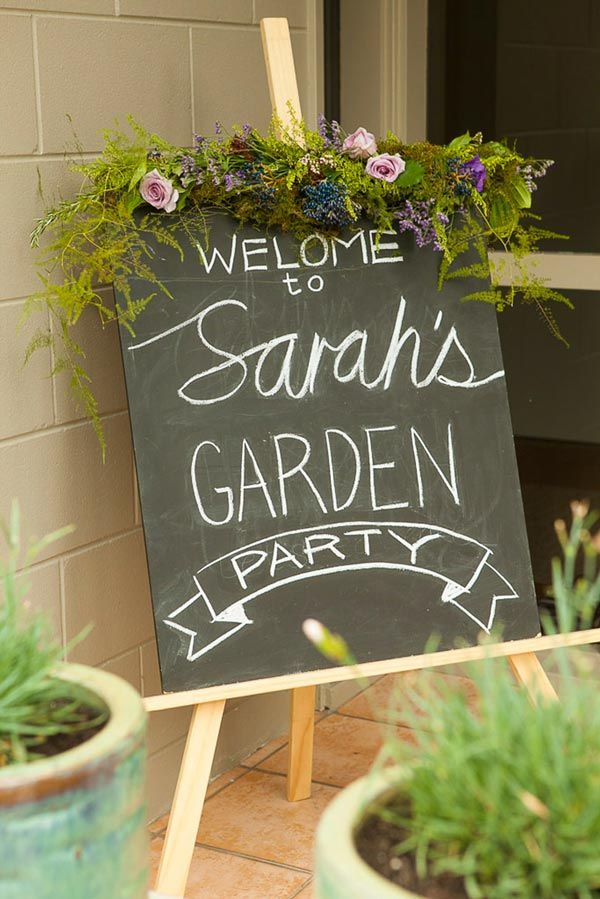 Once a week or fortnight thoroughly clean and disinfect the coop.
Once a week or fortnight thoroughly clean and disinfect the coop.
How Many Eggs Will My Chickens Lay?
Even rescue hens who are no longer commercially viable will lay an egg each or every other day. This will decrease as they get older and during the winter when daylight is shorter.
What Ailments Do Chickens Suffer From?
Lice, and three different types of mite – northern, scaly leg and red – can all be treated and prevented by good hygiene and regular cleaning. Mycoplasma is a respiratory disease that will affect the chickens' immune system but is again treatable. You would be very unlucky to suffer avian influenza, and this must be reported to DEFRA.
What Regulations Are There For Keeping Chickens In The Garden?
There are no laws preventing you keeping hens, providing they are looked after properly and their welfare is taken seriously. However, it is advisable to check your property deeds or consult your landlord to make sure there are no covenants preventing the keeping of livestock.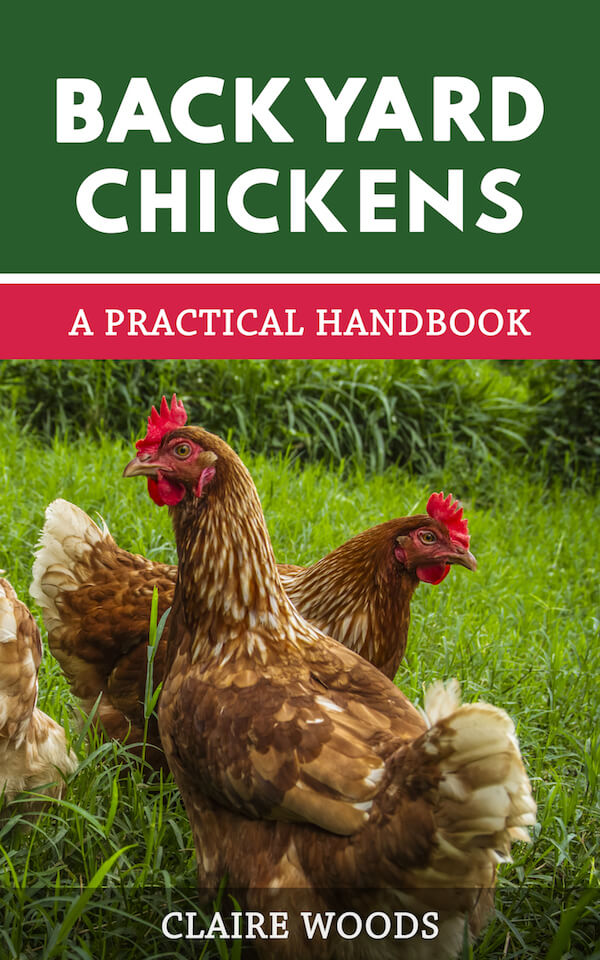 If you have a flock of over 50 birds, you must notify DEFRA, they can also provide you with a wealth of information on keeping chickens in the garden.
If you have a flock of over 50 birds, you must notify DEFRA, they can also provide you with a wealth of information on keeping chickens in the garden.
Where Can I Buy Chickens?
Hybrid and pure bred hens can be purchased from suppliers throughout the country but many people find rescuing ex-factory farm hens from slaughter an appealing alternative. They are docile, inoculated and still laying lots of eggs. Contact the British Hen Welfare Trust who have various regular collection points, there's a donation of £5 per hen.
Backyard Chickens | Benefits and Challenges for Gardeners
For many gardeners (myself included), the passion for producing our own food and caring for the natural world around us leads us to another hobby – keeping backyard chickens. My guest this week, Lisa Steele, is the go-to authority on that subject. Lisa discusses many aspects of keeping backyard chickens, including the benefits and challenges for gardeners.
A fifth-generation chicken keeper, Lisa has been enjoying the never-boring world of backyard chickens for most of her life and has shared her expertise through television, six books and a popular blog on the subject. I’ve had chickens at the GardenFarm™ for over seven years and been an admirer or Lisa’s practical advice for much longer.
I’ve had chickens at the GardenFarm™ for over seven years and been an admirer or Lisa’s practical advice for much longer.
Lisa is a fifth-generation keeper of chickens. Fortunately for us, she enjoys sharing her experiences and knowledge. (photo: Darlene Terry, Whimsical Years Photography)
Behind the Quirky Charm
If you’ve never spent much time around chickens, the idea of having your own flock might be a little idealized. Yes, these quirky birds are packed with personality and can stake quite a claim on your heart, but the truth is, they can be destructive too.
Lisa says chickens are like little garden tools. Their daily habits of scratching and pecking to hunt for insects serve to rototill, aerate and fertilize the garden. Unfortunately, chickens aren’t necessarily known for their manners. So, they are just as likely to scratch up your newly-planted seedlings as to help keep your pest population in check.
Where there are chickens, there will also be predators.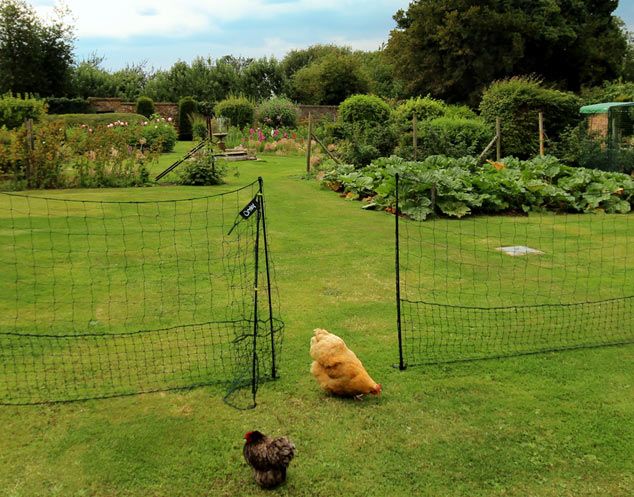 So in spite of our best efforts, loss is inevitable. That can be difficult to bear, because when you keep a flock of backyard chickens, you also – inevitably – become deeply attached to each and every one.
So in spite of our best efforts, loss is inevitable. That can be difficult to bear, because when you keep a flock of backyard chickens, you also – inevitably – become deeply attached to each and every one.
It doesn’t matter if you live in a rural area or an urban neighborhood, the threats to chicken safety are everywhere – the neighbor’s dog, an opportunistic hawk, a prowling coyote, etc. My heart has suffered the loss of many beloved chickens over the years. This year has been particularly rough, including the loss of my small but mighty rooster Reggie and joegardener fan-favorite – Louie the rooster.
Keeping chickens is rewarding and low maintenance. Just be prepared to weather a little bit of heartbreak along with the joy and gardening benefits.
A backyard flock of chickens will keep you entertained and provide a number of benefits to the garden, but you will need to be prepared for a little damage and heartbreak too. (photo: Darlene Terry, Whimsical Years Photography)
Feathered Garden Tools
Have you ever tasted a freshly-lain egg? If you have, you know that the fresher, the better. It’s also true that the eggs from chickens which are allowed to forage and roam (as chickens were meant to) are packed with more nutrients as a result. Thicker eggshells and a yellower yolk are evidence of tastier and healthier eggs, and even a small backyard flock can provide plenty for your table.
It’s also true that the eggs from chickens which are allowed to forage and roam (as chickens were meant to) are packed with more nutrients as a result. Thicker eggshells and a yellower yolk are evidence of tastier and healthier eggs, and even a small backyard flock can provide plenty for your table.
For most gardeners though, the greatest benefit of keeping chickens is the manure. It is garden gold.
As chickens wander your garden and leave their manure behind, it’s scattered sparsely enough to provide more benefit than harm. However, don’t make the mistake of cleaning out the coop and adding all that manure material directly to your garden beds. It is packed with so much nitrogen, that it will burn your plants. Collected chicken manure needs time to mellow.
In my coop, I use wood shavings (sawdust) as bedding material. The chicken manure and sawdust combine, which makes cleaning the coop easier, but it also creates the perfect compost addition.
The manure is high in nitrogen and, so, considered a green material in the world of composting. The sawdust is considered a brown material – meaning a source of carbon. When I clean out the coop each week or two, I add the manure and sawdust mixture to my compost pile.
The sawdust is considered a brown material – meaning a source of carbon. When I clean out the coop each week or two, I add the manure and sawdust mixture to my compost pile.
I don’t worry about green versus brown ratios in my compost bin. I know that, as the compost heap breaks down, the manure and sawdust combine beautifully with the other materials, and in about two months, I have rich finished compost to feed my soil. It keeps my soil rich in nutrients to feed my plants.
The compost here at the GardenFarm is amazing, and the manure and bedding from my chickens is a big reason why.
I love keeping chickens here at the GardenFarm, and their manure really kicks the nutrient power of my compost up a few notches.
Lisa uses a different approach, called the “deep litter” technique. She places a layer of sawdust or straw in the coop as bedding, but instead of cleaning it out each week and starting fresh, she turns it over (mixes it up) and adds more bedding material as needed.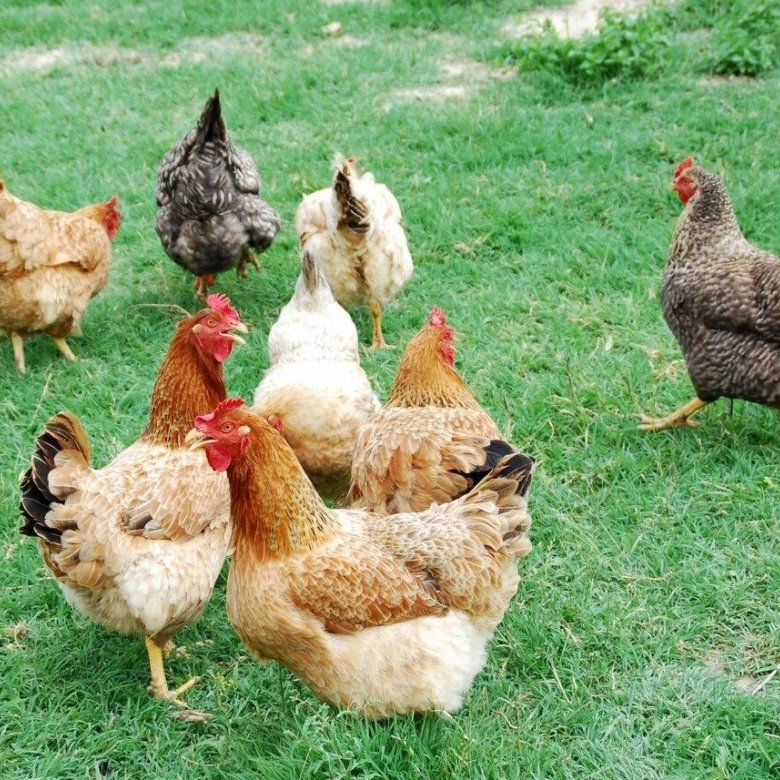 In essence, she is composting all that material in place.
In essence, she is composting all that material in place.
Turning it over infuses everything with the oxygen it needs to break down. Meanwhile, the regular addition of fresh bedding (brown material) and manure (green material) work together to decompose as any compost heap would. In the process, the deep litter bedding generates heat to keep the coop warm.
Studies have shown that the microbes promoted by the deep litter method keep chickens healthier through winter too. Another benefit is in time saved, of course. Lisa only cleans out the coop once or twice a year – in spring and, sometimes, in fall.
If you’re a clean freak, like I am, you might worry that the deep litter method will cause the coop to smell. As long as the bedding material and manure are turned over (mixed together) periodically for oxygen to keep the decomposition process humming, odors won’t be an issue. Turning once a week is optimal, and after a few months, you’ll discover a beautiful layer of soil-like material at the bottom of your coop’s bedding.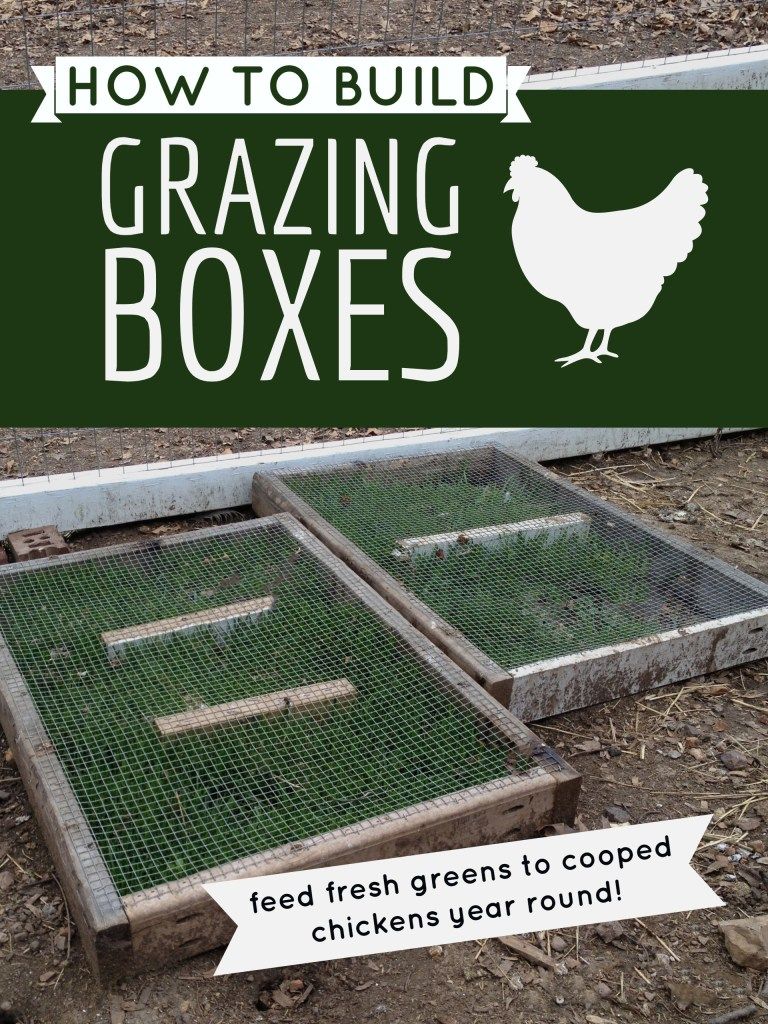
At that point, the decomposition has also mellowed out the nitrogen, so you can add it all directly to your garden just like you would any other form of compost. How great is that? You get an egg and compost factory working right in your own backyard.
This small coop and the chickens in residence will provide your household with fresh eggs and the ideal composting ingredients.
Pest Management System
Bugs might love your garden, but chickens do a great job loving the bugs right out of your garden. Chickens will eat grubs, beetles, ticks, earthworms, crickets, and more. They’ll even eat small snakes.
Now if you’ve been following me for very long, you probably know by now that only about 3% of the bugs in your garden are the bad guys. The rest are either neutral or beneficial, good-guy insects.
Should you worry that the chickens are eating the beneficials? Well, your flock will feast on good guys as well as bad guys, but the natural balance means there’s more pro to chicken foraging than there is con.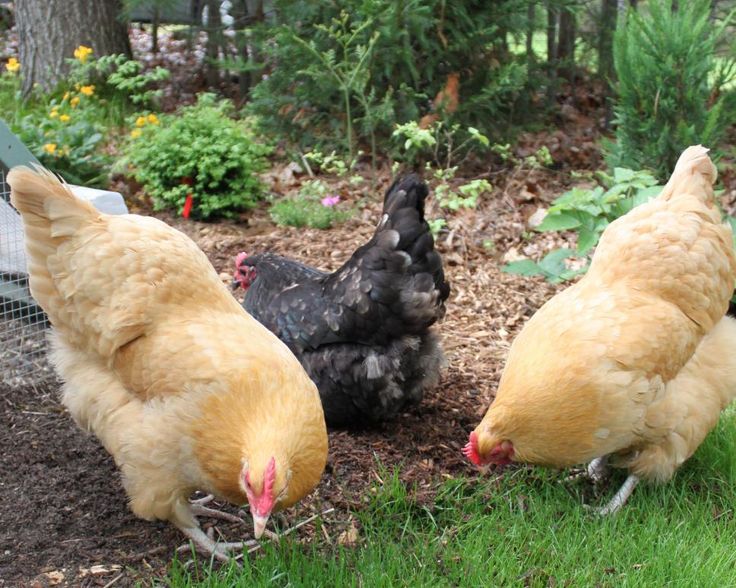
Instead, it’s damage to your plants that’s cause for concern. Be prepared to take some precautionary measures to prevent your flock from causing havoc as they hunt and peck.
At the GardenFarm, my chickens have the run of the place all day. In between growing seasons, they enjoy the empty beds. They take dirt baths in the loose soil and scratch the surface to get at grubs and other bugs. I enjoy that they are reducing the number of pests lurking in the beds and gently loosening the top inch or two of the surface.
However once I’ve sown seeds and planted seedlings, I’m not so keen on my chickens helping themselves. Tender seedlings are like a tasty all-you-can-eat buffet for chickens, and It doesn’t take them long to undo a couple of hours gardening work.
The split rail fence around the garden is not an effective deterrent. The chickens won’t fly over it, but they’ve learned to hop up onto the rail and down into the garden.
My chickens have learned to hop onto the top of the split rail fence surrounding my raised beds, so they can hop down into the garden.
Thank goodness for livestock panels. I realized a few years back that placing a panel over the raised beds allowed plants room to grow up between the galvanized metal grid, but the metal created a barrier to deter the chickens from scratching the soil surface. As a side benefit, the cats had to find themselves another litter box too.
Lisa offers some other suggestions for protecting a garden from chickens’ destructive tendencies.
If I were to add some sort of flexible netting to the top of my split rail fence, the flimsy material wouldn’t support the weight of the chickens. That way, they wouldn’t be able to perch on the fence and drop down into the garden. Inexpensive plastic netting can also be an effective barrier to corral prized plants or areas that need some temporary protection.
If you prefer not to use livestock panels, chicken wire can be an effective alternative for placing over the soil surface to deter scratching.
Unlike the family pet, you won’t be able to train your chickens to stay out of certain areas.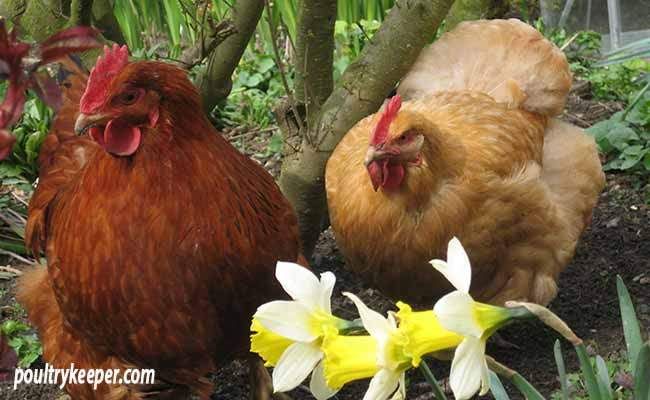 These birds don’t have a good sense of smell, so they will be unaffected by any sort of repellent spray. That means barriers are the only effective solution for protecting plants from your foraging flock.
These birds don’t have a good sense of smell, so they will be unaffected by any sort of repellent spray. That means barriers are the only effective solution for protecting plants from your foraging flock.
Lisa has gone the extra mile for her chickens and garden. Trying the out-of-sight-out-of-mind approach, she planted her food garden on the side of her home that was opposite from the chicken coop. Then, she planted a small garden near the coop just for her chickens, where they can take dust baths and forage all they like.
Lisa’s chickens still get into her food garden, but she feels they focus more of their potentially damaging activity in the chicken garden.
Lisa planted a garden area specifically for her flock – where they can forage and take the dust baths they love in the loose soil. (photo: Darlene Terry, Whimsical Years Photography)
Chicken Care Basics
Even if your chickens are allowed to forage and feed on insects throughout the day, they will require a supplemental food source to meet nutritional needs.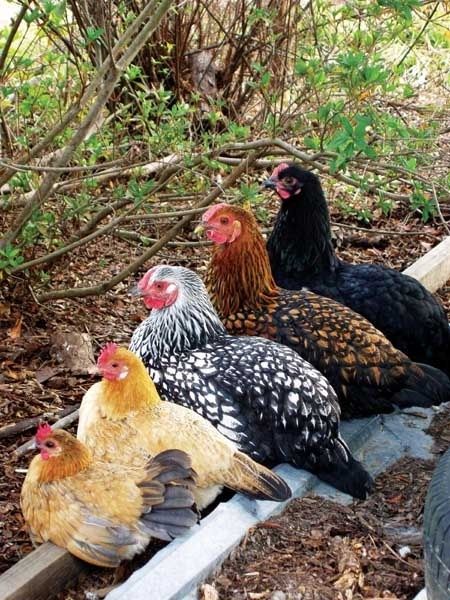 There are different types of feed available, so it’s important to choose the right feed for the right stage in the life of your chickens.
There are different types of feed available, so it’s important to choose the right feed for the right stage in the life of your chickens.
You can’t necessarily rely on the advice of staff at your local feed store. As with all things, it’s important that you do a little research. Be an educated consumer, so you can make smart choices for your chickens, just as you do for your garden.
Lisa recommends looking for organic, non-GMO feed options. She confirms that feeds available to the homeowner don’t include hormones, antibiotics or any other ingredient that might be of concern for composters.
Baby chicks require a lot of protein – provided by what’s referred to as “starter feed.” There isn’t any medication in what’s called “medicated starter feed.” That indicates the feed includes a vitamin B blocker which strengthens young chicks’ immune systems.
Once they reach the eight-week mark in their development, they need “grower feed” to provide the proper nutrient levels until they are mature enough to begin laying eggs – at 18-20 weeks of age.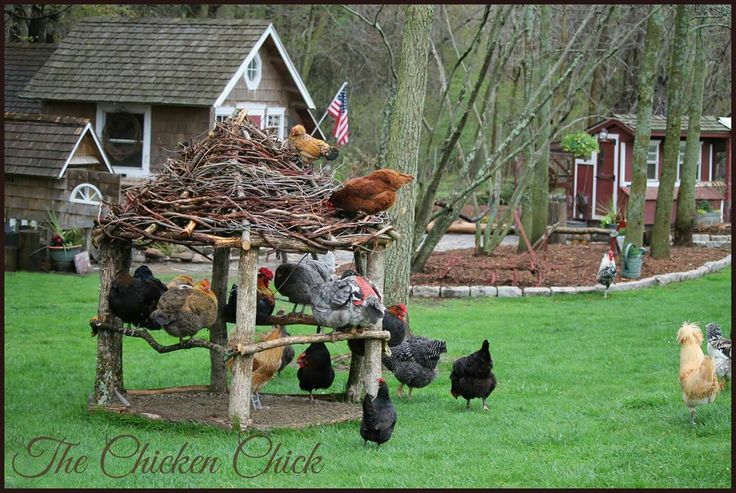
Hens of laying age require more calcium to support the formation of eggshells. That’s provided by “layer feed,” which also includes the higher nutrient content needed to support daily egg production.
Each chicken will require about a half cup of food per day. Free-range chickens will eat less than that, thanks to the nutrients they gain by foraging for insects; but they should still be provided access to the supplemental feed.
How much freedom you provide your flock during the day will depend on your tolerance level for inevitable loss to the predators roaming your urban or rural neighborhood. (photo: Darlene Terry, Whimsical Years Photography)
Fresh water is, of course, critical too. Your flock should always have water nearby throughout the day, and Lisa recommends adding apple cider vinegar as an immune system boost.
Like an organic gardener, Lisa prefers to care for her flock as naturally as possible. She’s found that adding a tablespoon of apple cider vinegar per gallon of water just a couple of times each week keeps the respiratory and immune systems of her chickens healthier.
To keep a cleaner coop and to prevent attracting rodents, Lisa provides food and water to her chickens outside only, and clearly, her flock is happy and healthy with that arrangement.
Proper Shelter
No matter how much freedom they might seek during the day, chickens are instinctively driven to a sheltered roosting spot as the sun goes down. Lisa uses that natural impulse to her advantage.
It’s not a matter of if your chickens will fall victim to predators. It’s a matter of when they will. Loss is inevitable, and trust me on this, it will hurt your heart every time.
Lisa lost chickens to a fox years ago. She vowed she would never allow it to happen again. The memory of that loss is why she is super vigilant with her flock. She allows them to free range only on afternoons when she can be physically present with them as protection.
Afternoons are ideal, since the flock gathers itself at the end of the day. Also, Lisa has noticed there tend to be fewer hawks and other aerial predators out hunting later in the day.
It might not be practical to invest afternoons protecting your free-ranging flock. So, how much (if any) free-range time you allow will depend on your lifestyle and tolerance for loss. Keeping chickens is a responsibility, but it also needs to be practical for you.
My GardenFarm chickens roam freely all day. I’m not able to devote specific periods to stand guard, and I prefer to allow the flock more freedom to forage.
Reggie – the handsome little white fellow – was one proud and confident rooster. He definitely ruled the flock at the GardenFarm. Even much-larger Louie was no match for Reggie’s valiant spirit. Unfortunately, Reggie was no match for the neighbor’s prowling dog. Losing a beloved member of your flock never gets easier.
In my rural area, there are lots of predators to contend with. This year, it was a neighbor’s dog that caused the most loss. Fortunately, the owner was sensitive to the problem and took preventative measures. In recent months, something else has been prowling the area, resulting in the disappearance of a few more of my flock.
I’ve never experienced as much death as I’ve dealt with since keeping chickens at the GardenFarm. I make sure to provide a secure coop and take as many precautions as practically possible. Unfortunately, there are always elements outside of our control in the natural world.
The only element you can control is the security of your coop. You just can’t take too many precautions when it comes to coop construction.
A coop needs a window or two for air circulation, but those are also potential openings for hungry predators. So, secure windows using welded wire, and add latches to lock them down. Lisa recommends taking the extra step of securing window latches and the door with carabiners to keep out crafty predators like raccoons.
Consider adding a flashing solar predator light to the coop as a scare tactic. Not only can it deter anything looking for a chicken dinner, Lisa has found they keep deer out of her garden too.
Periodically, check coop windows and doors for damage. At least a couple of times a year, I’m repairing holes created by the determined efforts of coyotes, raccoons and other wiley hunters.
At least a couple of times a year, I’m repairing holes created by the determined efforts of coyotes, raccoons and other wiley hunters.
Even when you think you’ve taken every precaution possible, it only takes one tiny window of opportunity to lose a member of your flock. When something does strike, identifying the enemy can prevent more loss. Trail cams are a widely available and relatively inexpensive way to see what’s taking place during the dark of night.
Most predators will scope out a situation before they attack. So, a trail cam on or near the coop provides a “heads up” that trouble is lurking, or it can show you what you are dealing with and any potential weaknesses in the coop.
Lisa spends afternoons outdoors with her chickens. It’s the only time she allows them to free-range, because she prefers to be on hand to protect them from predators. (photo: Darlene Terry, Whimsical Years Photography)
Whether you build your own coop or buy one, there are all kinds of options for security and convenience.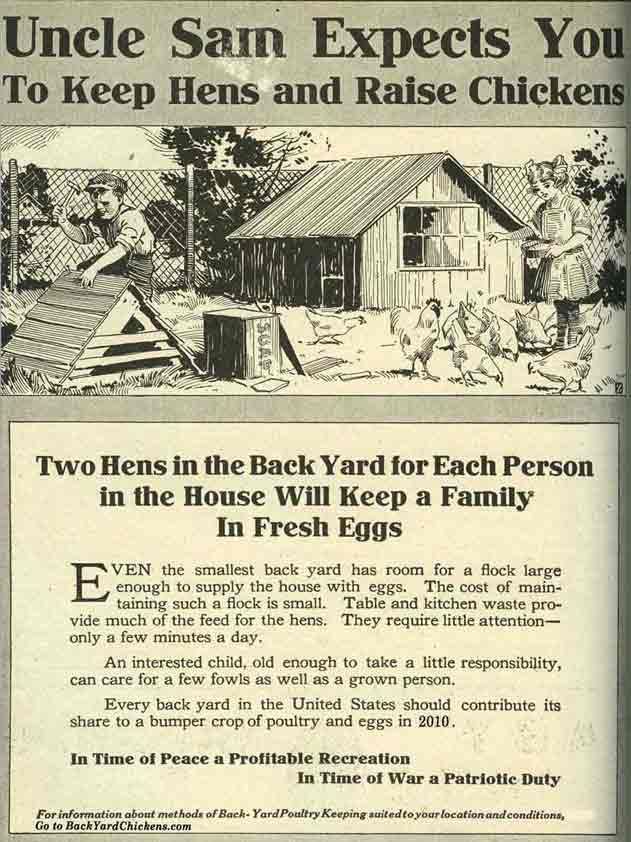 Here again, it pays to do a little homework. You might not need all the bells and whistles that, at first glance, appear to be so necessary.
Here again, it pays to do a little homework. You might not need all the bells and whistles that, at first glance, appear to be so necessary.
Automatic door openers are a good example. Whether or not you need one, depends on your lifestyle. If you won’t always be home by dusk, a solar door can be a great option. The door opens at sunrise and closes as night falls, once the chickens have instinctively gathered inside.
On the other hand, you may be like Lisa. She prefers opening the door in the morning and closing it herself at night. My daughter, Amy, does the same here at the GardenFarm. Some of us just feel more comfortable using the opportunity to do a headcount of the flock every night and to keep an eye on the overall security and state of the coop.
Automatic doors just might keep something in that you don’t want. Other wildlife – like, owls, possums, snakes, or the neighborhood cat – can wander in during the day and get locked into the coop with your chickens thanks to an automatic door.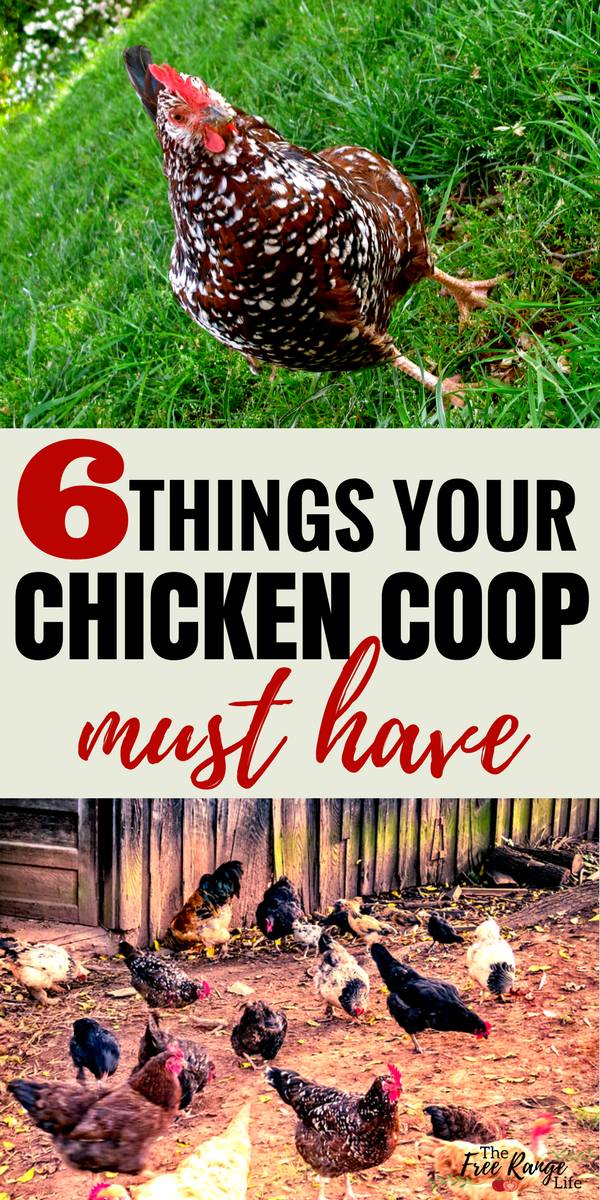 So, be sure to weigh the pros and cons of this type of convenience.
So, be sure to weigh the pros and cons of this type of convenience.
Lisa also cautions against heating a coop. Here in Atlanta, I never have to worry much about protection from the cold. Lisa, on the other hand, lives in Maine where winters are serious business.
Initially, she wasn’t sure how much cold her flock could tolerate. One morning, temperatures dropped more than expected. A bitter -16 degrees (not factoring in windchill) left Lisa sure that she would open the coop to find all her chickens dead. To her relief, they all walked out seemingly unfazed.
Lisa has found that the temperatures inside her coop tend to stay around 20 degrees warmer than outside. That is, in part, thanks to the heat generated by the deep litter method.
Become familiar with the conditions inside your coop. Chickens are surprisingly durable little creatures. Odds are good that you don’t need to provide supplemental heat. Even without the warmth from deep litter, the collective body heat of the flock in the small space provides a lot of protection.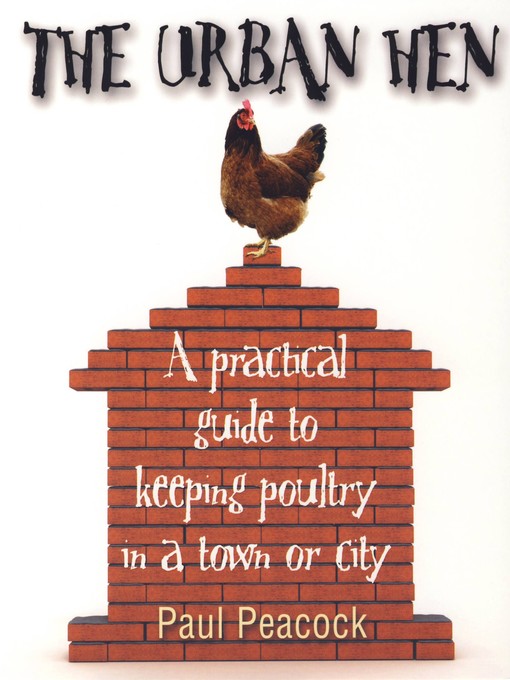
Chicken coops have been known to burn down as a result of a heat source, so it’s best to avoid heating the space.
Lisa has noticed that, during the coldest winter days, the chickens eat and drink quickly outside – then head back into the warmer environment of the coop. She uses a heated dog bowl to keep water from icing over during the day. When she shuts the flock up at night, she dumps out the water and refills it the next morning as the chickens start their day.
When it comes to cold, chickens are very resilient. During particularly harsh conditions, they prefer to spend most of their day huddled in the naturally-warmer environment of the coop. (photo: Darlene Terry, Whimsical Years Photography)
The Most Difficult Challenge
Chickens can be a little destructive and require a bit of attention to provide for their safety and well-being, but generally, chickens are very easy to care for. They do well in urban environments too, because they tend to be quiet and don’t need much space to thrive. That’s true of hens. Roosters are a different story.
That’s true of hens. Roosters are a different story.
Roosters are noisy. Period. They don’t crow one majestic time at the break of day. They crow all day long. You’ve probably heard Louie the rooster interjecting in at least one of my podcast recordings, and he loved to sound off while the crew and I were filming episodes of Growing a Greener World® or how-to videos for my YouTube channel.
Was it annoying? Sometimes it was, but he held a special place in my heart nonetheless. If I had neighbors in close proximity, they probably wouldn’t have found Louie’s vocal exercises quite as endearing. Roosters are loud.
They also terrorize the hens. A rooster will chase his hens constantly, and his sharp claws will tear out feathers and even draw blood from the backs of his brood. Did you know that there are tiny aprons available for sale that are meant to be secured around a hens waist to cover her back for protection? Neither did I – until I had roosters.
We can’t really blame them. After all, it’s a rooster’s job to control “his” flock and to – ahem – fertilize eggs for a future generation. It’s what he was born to do. Unfortunately, it’s very difficult to tell when it is a “he” that is born.
After all, it’s a rooster’s job to control “his” flock and to – ahem – fertilize eggs for a future generation. It’s what he was born to do. Unfortunately, it’s very difficult to tell when it is a “he” that is born.
Louie was one proud rooster, and he had a knack for sounding off while I was recording a podcast or video. Losing him to some mysterious predator was a difficult blow this year.
Those cute, yellow balls of cheeping fluff gathered in heated pens at the local feed store all look the same – in every way. Future hen or future rooster? It takes a professional eye and a magnifying glass to tell the difference in the early stages of life, because the sex organs of chickens are internal.
Feed stores take steps to separate female chicks for sale, but it’s not uncommon for a future rooster to get mixed in with the crowd. Do you plan to hatch any of the eggs produced by your flock? It’s inevitable that you will find yourself with unwanted roosters.
Unfortunately, it can be difficult to find roosters a welcoming new home.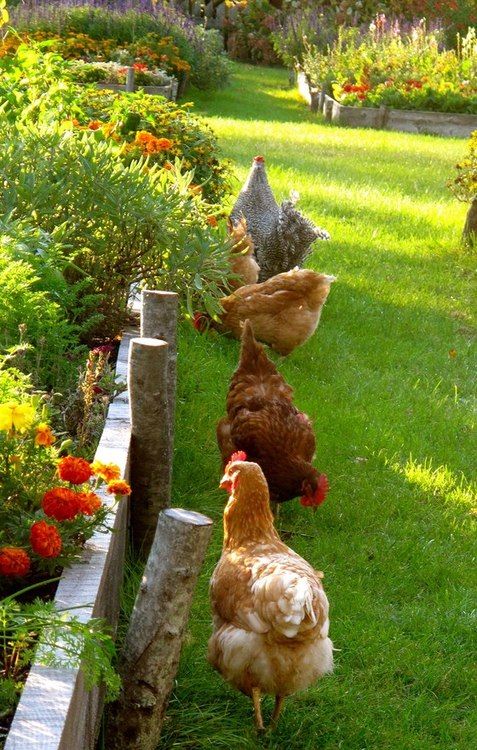 I’ve tried to put them up for adoption on Craigslist and similar sites, but there are few takers. Most backyard chicken keepers are in the same boat – preferring hens and avoiding roosters. It is, hands down, the single worst issue when it comes to keeping chickens.
I’ve tried to put them up for adoption on Craigslist and similar sites, but there are few takers. Most backyard chicken keepers are in the same boat – preferring hens and avoiding roosters. It is, hands down, the single worst issue when it comes to keeping chickens.
For that reason, it’s a good idea to avoid hatching eggs yourself, and when purchasing chicks, buy from a reputable hatchery or online supplier.
There are color-sexing breeds – meaning the males and females look different at birth – but those tend to be production breeds, rather than what most people consider to be the desirable breeds for a backyard flock.
Remember that any change in population will impact the flock’s social structure. Your chicken flock, no matter how large or small, is organized by a pecking order. New chickens won’t be easily accepted by the existing group. In fact, chickens will sometimes kill new intruders because of the threat to the pecking order.
So anytime you add a chick or adult bird to your flock, you need to take some safety precautions. Lisa recommends against adopting adult birds, because they can introduce disease into your flock.
Lisa recommends against adopting adult birds, because they can introduce disease into your flock.
If you hatch eggs, you will inevitably find yourself with roosters. About half of all eggs will be male.
She prefers to hatch eggs under a hen in her flock. The new chick will be adopted by the group immediately.
When that’s not an option, she takes care to only add chicks which are 8-9 weeks old. She shelters the new chicks in a starter coop for about two weeks. The starter coop is placed next to the chicken run, so all the birds can become familiar with each other before physical contact is possible. Only after that get-to-know-you time does Lisa incorporate the new chick with the rest of the flock.
Late winter or early spring is the best time to introduce new chicks, depending on where you live. Some feed stores have begun promoting fall “chick days,” but unless you live in a mild climate, chicks aren’t up for the challenges of winter. In her cold Maine climate, Lisa avoids adding chicks any later than early spring, because she wants to be sure the chicks have time to develop adult feathers before the winter cold sets in.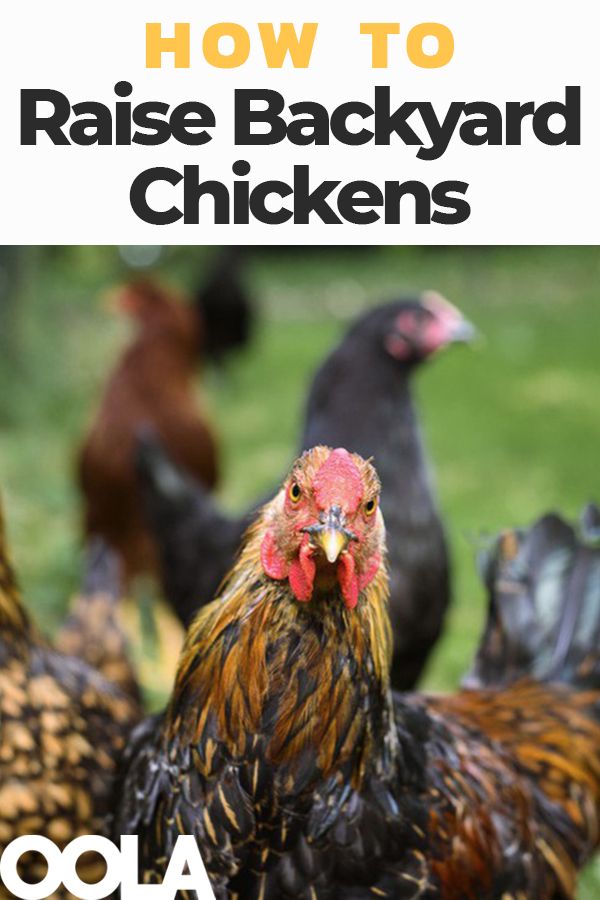
Gardening with Your Flock
Your chickens will gobble up any pests you pick off garden plants or seedlings you thin from your early season beds. They’ll also appreciate some of your crops more than others. Plants that Lisa recommends as being good for your flock include:
- Garlic – Lisa adds a crushed garlic clove to the chickens’ water supply a couple of times each week for its respiratory and immune system benefits.
- Pumpkins & Cucumbers – Although Lisa hasn’t seen evidence to prove it, these plants are believed to act as natural wormers.
- Melons, Squash, Peas, Leafy Greens – These crops don’t provide any health benefits, but chickens love them. Beet and turnip greens are also particular favorites.
Lisa recommends against letting chickens near white potatoes (sweet potatoes are safe) or members of the Nightshade family of plants – like tomatoes, peppers, and eggplant. These plants won’t cause death, but they aren’t good for chicken health.
Unless you live in a mild climate, it’s best to add chicks only in late winter or early spring, so they have time to develop adult feathers for protection against winter cold.
A good way to remember what not to give your chickens is the ingredients in guacamole. You and I might love the combination of tomatoes, onions, citrus, and avocado that make up that Mexican dip; but they are all potentially harmful to your chickens.
A Gardener’s Addiction
The little bit of effort your backyard chickens will require from you is well worthwhile. On average, you will spend about five minutes every morning and evening, along with a little time once each week or two to clean the coop.
In return, these industrious creatures will entertain you, eat pests for you, improve soil health, and provide eggs for your table. Once they become a part of your lifestyle, you will probably be hooked forever. I am.
Along with Louie and Reggie, my flock has been made up of a ragtag host of memorable characters through the years.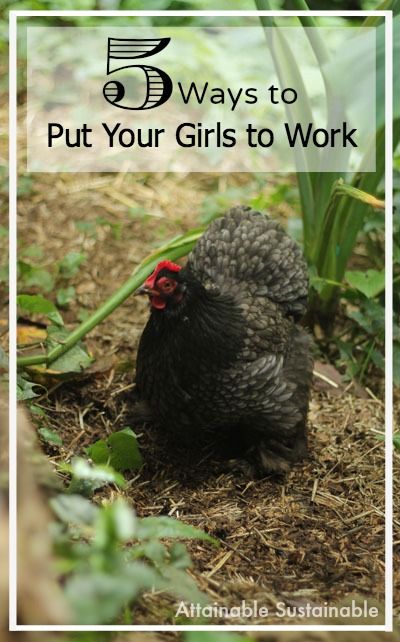 Who have been some of the standouts of your backyard chicken keeping? I’m betting you have at least a story or two to share, and I hope you do just that – in the Comments section below.
Who have been some of the standouts of your backyard chicken keeping? I’m betting you have at least a story or two to share, and I hope you do just that – in the Comments section below.
I also hope you’ll be sure to listen to my conversation with Lisa by scrolling to the top of the page and clicking the Play icon in the green bar under the page title. If you have chickens or are thinking of adding some to your little corner of the world, trust me – you are going to want to get to know Lisa Steele, and our chat is a great place to start. Then, check out her books, blog, and social channels. They’re all linked below for easy reference.
Links & Resources
Episode 016: Composting Guide A to Z: The Quick and Dirty on Everything Compost
Episode 106: Livestock Panels: Top 10 Uses in the Garden for This Versatile Material
joegardener Blog: The Benefits of Backyard Chickens to Your Compost
joegardenerTV YouTube
joegardenerTV: Easy-to-Use Features for Backyard Chicken Coop
joegardenerTV: How to Build a Chicken Coop
joegardenerTV: Understanding Egg Labels – Which Options are Humane?
joegardener Online Academy: Master Pests, Diseases, and Weeds – Just $47 for lifetime access! Watch for my new course on seed starting coming soon!
joegardener Newsletter
joegardener Facebook
joegardener Facebook Group
joegardener Instagram
joegardener Twitter
Growing a Greener World®
Fresh Eggs Daily, by Lisa Steele
Fresh Eggs Daily – Lisa Steele’s popular website and blog
Lisa Steele’s Other Books, Plus Chicken-keeping Tools and Resources
Building Chicken Coops For Dummies, by Todd Brock
Corona® Tools – Our podcast episode sponsor and Brand Partner of joegardener. com
com
Pete and Gerry’s Organic Eggs – Podcast episode sponsor and Brand Partner of joegardener.com
*Disclosure: Some product links in this guide are affiliate links, which means we would get a commission if you purchase. However, none of the prices of these resources have been increased to compensate us. None of the items included in this list have any bearing on any compensation being an influencing factor on their inclusion here. The selection of all items featured in this post and podcast were based solely on merit and in no way influenced by any affiliate or financial incentive, or contractual relationship. At the time of this writing, Joe Lamp’l has professional relationships with the following companies who may have products included in this post and podcast: Rain Bird, Corona Tools. These companies are either Brand Partners of joegardener.com and/or advertise on our website. However, we receive no additional compensation from the sales or promotion of their product through this guide. The inclusion of any products mentioned within this post is entirely independent and exclusive of any relationship.
The inclusion of any products mentioned within this post is entirely independent and exclusive of any relationship.
Russians were allowed to breed chickens in gardens and gardens
https://ria.ru/20220628/kury-1798687869.html
Russians were allowed to breed chickens in gardens and gardens
Russians were allowed to breed chickens in gardens and gardens - RIA Novosti, 06/28/2022
Russians were allowed to breed chickens in garden and garden plots
The State Duma adopted in the second and third readings a law allowing to breed chickens and rabbits in garden and garden plots and simplifying the registration of such plots in RIA Novosti, 06/28/2022 nine0003
2022-06-28T13: 39
2022-06-28T13: 39
2022-06-28T13: 39
Society
Russia
Duma of the Russian Federation
/HTML/Head/META [@NAME = ' og:title']/@content
/html/head/meta[@name='og:description']/@content
https://cdnn21.img.ria.ru/images/07e5/09/18
MOSCOW, June 28 - RIA Novosti. The State Duma adopted in the second and third readings a law allowing the breeding of chickens and rabbits in garden and garden plots and simplifying the registration of such plots in shared ownership. The original version simplified the procedure for transferring common land plots to common ownership within the framework of partnerships of gardeners or gardeners. It excluded the need to obtain the consent of all owners of garden or garden plots located within the boundaries of the partnership when a general meeting of its members decides on such a transfer. As part of the second reading, the State Duma supported a number of additional amendments, including those allowing the use of garden and garden land for growing citizens for their own needs of poultry and rabbits, subject to compliance with land legislation, veterinary norms and rules, sanitary and epidemiological rules and hygienic standards. But for this, such an opportunity must be provided for by the urban planning regulations for the territory where such a site is located, or a permit has been issued.
The State Duma adopted in the second and third readings a law allowing the breeding of chickens and rabbits in garden and garden plots and simplifying the registration of such plots in shared ownership. The original version simplified the procedure for transferring common land plots to common ownership within the framework of partnerships of gardeners or gardeners. It excluded the need to obtain the consent of all owners of garden or garden plots located within the boundaries of the partnership when a general meeting of its members decides on such a transfer. As part of the second reading, the State Duma supported a number of additional amendments, including those allowing the use of garden and garden land for growing citizens for their own needs of poultry and rabbits, subject to compliance with land legislation, veterinary norms and rules, sanitary and epidemiological rules and hygienic standards. But for this, such an opportunity must be provided for by the urban planning regulations for the territory where such a site is located, or a permit has been issued.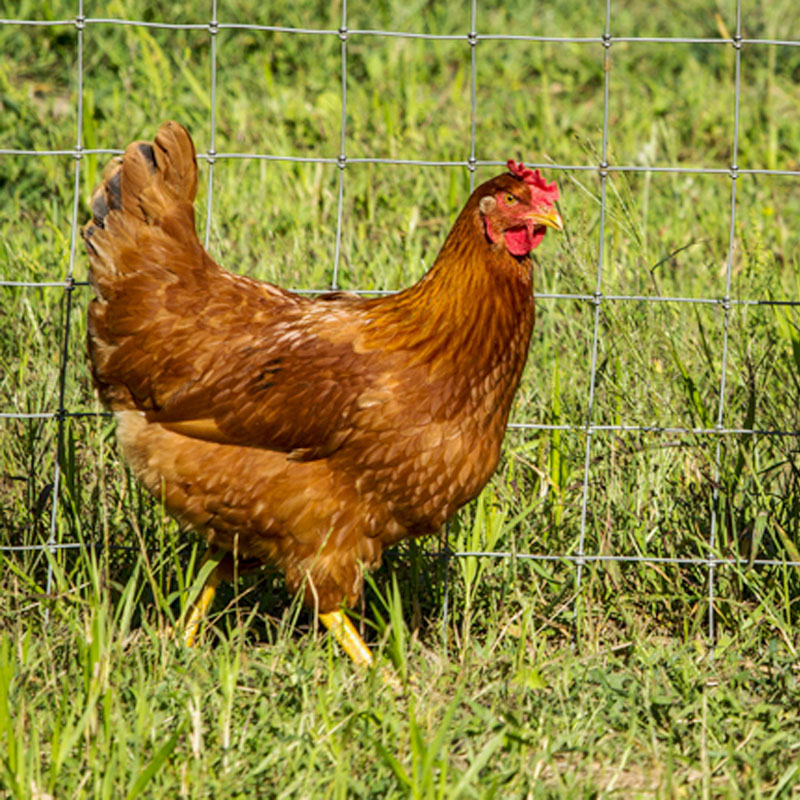 The amendments also allow the transfer of common property located within the boundaries of horticulture or horticulture, and electricity and water supply. In addition, until March 1, 2031, members of non-profit organizations have the right to acquire ownership free of charge without holding an auction of a state or municipally owned garden or garden plot of land regardless of the date of entry into membership. In order to reduce the costs of associations of gardeners and gardeners, the law improves the formation orchards and orchards. This eliminates the need for the formation of such areas on the basis of documentation for the planning of the territory. And for horticultural associations, the obligation to develop a territory planning project is also canceled - the need for development will be determined by the general meeting of the partnership members. At the same time, the right of associations of gardeners and gardeners to vote not only in person, but also remotely, but from January 1, 2023 through the portal public services.
The amendments also allow the transfer of common property located within the boundaries of horticulture or horticulture, and electricity and water supply. In addition, until March 1, 2031, members of non-profit organizations have the right to acquire ownership free of charge without holding an auction of a state or municipally owned garden or garden plot of land regardless of the date of entry into membership. In order to reduce the costs of associations of gardeners and gardeners, the law improves the formation orchards and orchards. This eliminates the need for the formation of such areas on the basis of documentation for the planning of the territory. And for horticultural associations, the obligation to develop a territory planning project is also canceled - the need for development will be determined by the general meeting of the partnership members. At the same time, the right of associations of gardeners and gardeners to vote not only in person, but also remotely, but from January 1, 2023 through the portal public services.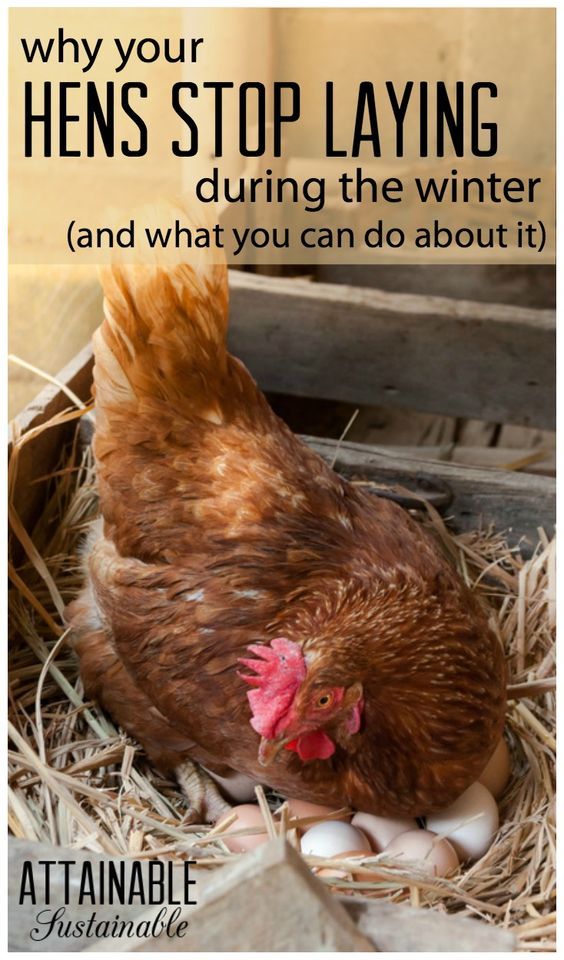 It is simpler, more convenient and saves time, since it will be possible to express one's opinion promptly, without coming anywhere, Russian Prime Minister Mikhail Mishustin explained. The law should come into force from the day of its official publication. nine0003
It is simpler, more convenient and saves time, since it will be possible to express one's opinion promptly, without coming anywhere, Russian Prime Minister Mikhail Mishustin explained. The law should come into force from the day of its official publication. nine0003
https://ria.ru/20210429/sadovody-1730443103.html
https://ria.ru/20220304/amnistiya-1776601899.html
Russia
RIA Novosti
1 9000 1 9000 1 9000 9000 4.7
96
7 495 645-6601
FSUE MIA "Russia Today"
https: //xn---c1acbl2abdlkab1og.xn-p1ai/AVARDS/
2022 9000 9000 9000 9000 9000 9000 Olga Fomchenkova
Olga Fomchenkova
News
en-RU
https://ria.ru/docs/about/copyright.html
https://xn--c1acbl2abdlkab1og.xn--p1ai/
RIA Novosti
1
5 9002 4.7
96
7 495 645-6601
FSUE MIA "Russia Today"
https: //xn---C1acbl2abdlkab1og. xn-p1ai/Awards/
xn-p1ai/Awards/
1920 9000 9000 9000 9000 9000 9000 9000 9000
1080
true
1920
1440
true
Society, Russia, State Duma of the Russian Federation
MOSCOW, June 28 - RIA Novosti. The State Duma adopted in the second and third readings a law allowing the breeding of chickens and rabbits in garden and garden plots and simplifying the registration of such plots in shared ownership.
The original version simplified the procedure for transferring land plots for common use to common ownership within the framework of partnerships of gardeners or gardeners. It excluded the need to obtain the consent of all owners of garden or garden plots located within the boundaries of the partnership, when a general meeting of its members makes a decision on such a transfer. nine0003
April 29, 2021, 12:00
Olga Voronova: gardeners are returning beds instead of lawns to plots poultry and rabbits subject to compliance with land legislation, veterinary norms and rules, sanitary and epidemiological rules and hygienic standards. But for this, such an opportunity must be provided for by the urban planning regulations for the territory where such a site is located, or a permit has been issued. nine0003
But for this, such an opportunity must be provided for by the urban planning regulations for the territory where such a site is located, or a permit has been issued. nine0003
The amendments also allow the transfer of common property located within the boundaries of horticulture or horticulture to the ownership of organizations providing gas, water, heat and electricity, and sanitation. In addition, before March 1, 2031, members of non-profit organizations have the right to acquire ownership free of charge without holding an auction of a state or municipally owned garden or garden land plot, regardless of the date of entry into membership. nine0003
In order to reduce the costs of associations of gardeners and horticulturalists, the law improves the procedure for establishing garden and orchard land plots. This eliminates the need for the formation of such areas on the basis of documentation for the planning of the territory. And for horticultural associations, the obligation to develop a territory planning project is also canceled - the need for development will be determined by the general meeting of members of the partnership.
At the same time, the right of associations of gardeners and gardeners to vote not only in person, but also remotely, and from January 1, 2023 through the portal of public services is secured. It is simpler, more convenient and saves time, since it will be possible to express one's opinion promptly, without coming anywhere, Russian Prime Minister Mikhail Mishustin explained. nine0003
The law shall enter into force on the date of its official publication.
March 4, 20:28
How to arrange a plot for a dacha amnesty: expert advice
How to properly breed chickens? households at his house as a whole. One of the things that, as a rule, is carried out in the spring is the establishment of chickens. In addition, poultry meat and eggs are becoming more expensive (see yesterday's issue of "OG"), so the recommendations of experts on how to choose chickens and how to properly keep them are very helpful. nine0134
Red and meat
Keeping chickens in your house may be troublesome, but it pays off with a vengeance. Every day - fresh eggs, the same scrambled eggs, by the way, turn out to be much tastier and richer even in color. And of course, this is fresh chicken meat, which is much tastier and healthier than store-bought. But, as in any business, there are some nuances in breeding and keeping chickens. The first is the choice of chickens. Here, the market immediately comes to mind for most people - for example, in Yekaterinburg or Verkhnyaya Pyshma, you can buy anything at such a site. However, experienced poultry owners are advised to buy chickens only in specialized nurseries or through trusted acquaintances. nine0003
Every day - fresh eggs, the same scrambled eggs, by the way, turn out to be much tastier and richer even in color. And of course, this is fresh chicken meat, which is much tastier and healthier than store-bought. But, as in any business, there are some nuances in breeding and keeping chickens. The first is the choice of chickens. Here, the market immediately comes to mind for most people - for example, in Yekaterinburg or Verkhnyaya Pyshma, you can buy anything at such a site. However, experienced poultry owners are advised to buy chickens only in specialized nurseries or through trusted acquaintances. nine0003
- It is worth choosing chickens up to six months, ideally - five months, - recommends an employee of the poultry yard of the Derzhava social center in Sredneuralsk Natalya Mazhara . - In general, there are several breeds of chickens: egg (popularly laying hens), meat, meat and egg, ornamental, vociferous and fighting, as well as broilers. Everyone chooses a breed for their tasks, but, as a rule, preference is given to chickens of the first three breeds.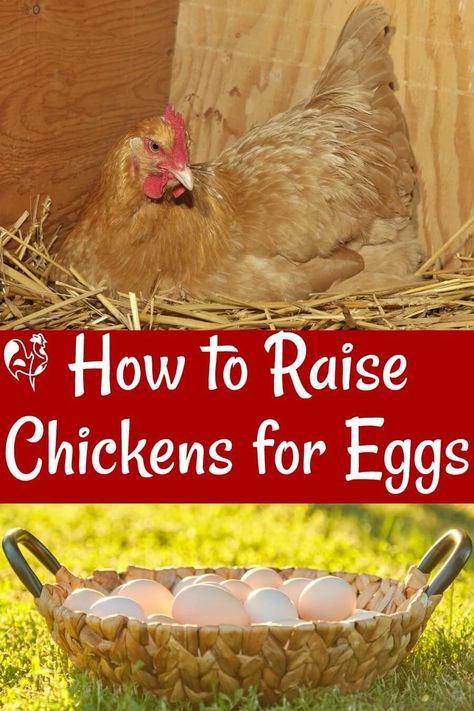 Meat chickens are more massive, as they are sharpened to give more meat, egg ones are more accurate. But it can be extremely difficult to distinguish them outwardly, so it is better to trust a specialist. In Russia, the most popular chickens are white and red. But, in our experience, there is no difference between them, except for color. nine0003
Meat chickens are more massive, as they are sharpened to give more meat, egg ones are more accurate. But it can be extremely difficult to distinguish them outwardly, so it is better to trust a specialist. In Russia, the most popular chickens are white and red. But, in our experience, there is no difference between them, except for color. nine0003
12 hours of light and shells
After buying chickens, it is important to ensure that they are properly managed. Birds definitely need a chicken coop, and insulated, and not just a barn. I saw such a simple option: four pillars dig a little into the ground and are sheathed on both sides with boards, sawdust is poured between them. And of course, it is necessary to make perch saddles - sticks or slats diagonally at a height of at least a meter, on which chickens prefer to sleep.
Four to five layers or three to four broilers need at least one square meter. Accordingly, the more birds, the more space should be. Nests are better to arrange higher. For this, small plywood boxes are quite suitable, in which hay or straw is usually laid with a recess in the center. And so that the laying hens understand that eggs need to be laid here, you can put a tennis ball or an egg there. nine0003
Nests are better to arrange higher. For this, small plywood boxes are quite suitable, in which hay or straw is usually laid with a recess in the center. And so that the laying hens understand that eggs need to be laid here, you can put a tennis ball or an egg there. nine0003
- Chickens are very sensitive to light, so in the autumn-winter period, when the daylight hours are shorter, they need to turn on the light bulb and make sure that they have at least 12 hours of light a day, - says Natalya Mazhara.
As far as diet is concerned, the hens do an excellent job with scraps from the family table. But there is still one obligatory component of their diet - small, almost like sand, pebbles. The organism of these birds is designed in such a way that small pebbles are fixed on the walls of their stomach and grind food. In addition, chickens must be given finely crushed egg shells so that they have enough calcium for egg production. And of course, chickens are very fond of eating fresh grass, especially wood lice.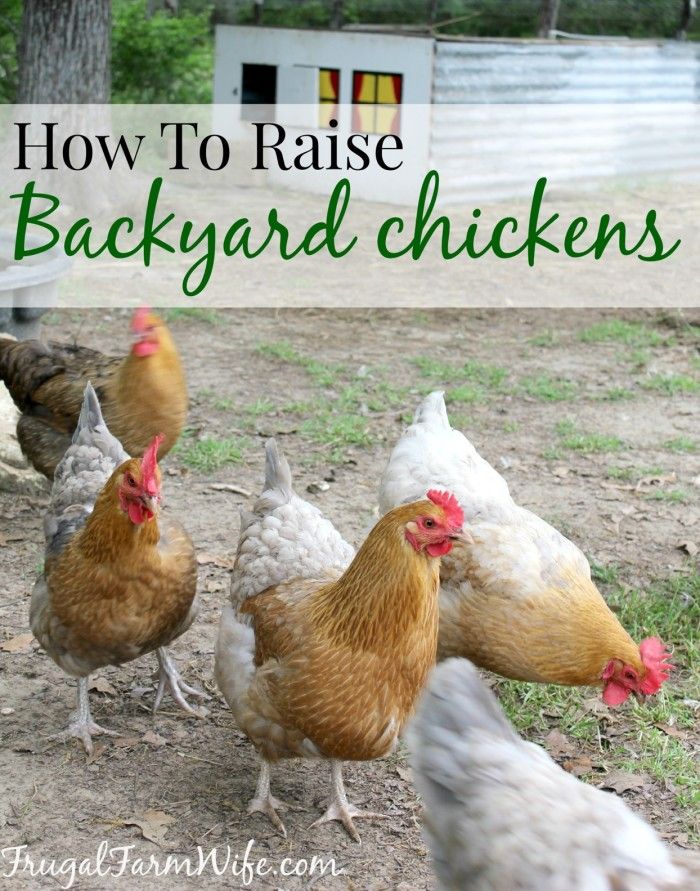 nine0003
nine0003
SAFETY
If you raise chickens yourself, it is better to take them out to the sun and fresh air in a special box with a lattice roof: crows, kites and foxes do not sleep, but it happens that dogs chase chickens.
BTW
If chickens are slaughtered on their own, then the hostess will have to perform such an operation as scalding and plucking the bird. But if you don't need a down-feather, then you can simply peel off the skin along with feathers - this is how hunters do with a duck. True, lovers of a toasted crust will probably not understand. nine0003
FROM PERSONAL EXPERIENCE
Anastasia BAYRAKOVSKAYA , Oblgazeta columnist:
–At one time our family lived in a private house, and our friends gave us five hens. In the summer we kept them in the shed, and in the winter we let them into the basement (we had a warm one), set a timer there that turned the light on and off when necessary.